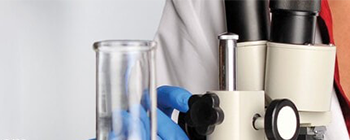Learn More
CD144 (VE-cadherin) Monoclonal Antibody (eBioBV13 (BV13)), PE, eBioscience™, Invitrogen™
Rat Monoclonal Antibody
Supplier: Invitrogen 12144180
Description
Description: The eBioBV13 (BV13) monoclonal antibody reacts with mouse VE-Cadherin (CD144). VE-Cadherin is a 120 kDa member of the type II Cadherin family, characterized by the presence of 5 extracellular cadherin domains (ECD), and anchored to the actin cytoskeleton through their cytoplasmic tail. VE-Cadherin mediates homophilic adhesion between neighbouring endothelial cells and is localized within specialized structures at cell-cell contacts, called adherens junctions. VE-Cadherin is expressed constitutively throughout the entire vasculature, and is required for numerous endothelial cell functions including migration, survival, contact-dependent growth inhibition and endothelial cell assembly into tubular structures. Furthermore, it is thought that VE-Cadherin+CD45- cells from the yolk sac or aorta-gonad-mesonephros (AGM) have the potential to give rise to hematopoietic cells. Applications Reported: This eBioBV13 (BV13) antibody has been reported for use in flow cytometric analysis. Applications Tested: This eBioBV13 (BV13) antibody has been tested by flow cytometric analysis of bEnd.3 cells. This can be used at less than or equal to 0.25 μg per test. A test is defined as the amount (μg) of antibody that will stain a cell sample in a final volume of 100 μL. Cell number should be determined empirically but can range from 10^5 to 10^8 cells/test.
VE-cadherin is a member of the cadherin superfamily that is located in a six-cadherin cluster in a region on the long arm of chromosome 16 and is involved in loss of heterozygosity events in breast and prostate cancer. VE-cadherin protein is a calcium-dependent cell-cell adhesion glycoprotein comprised of five extracellular cadherin repeats, a transmembrane region and a highly conserved cytoplasmic tail. Functioning as a classic cadherin by imparting to cells the ability to adhere in a homophilic manner, VE-cadherin may play an important role in endothelial cell biology through control of the cohesion and organization of the intercellular junctions. An alternative splice variant has been described but the full length sequence of VE-cadherin has not been determined.Specifications
| CD144 (VE-cadherin) | |
| Monoclonal | |
| 0.2 mg/mL | |
| PBS with 0.09% sodium azide; pH 7.2 | |
| P55284 | |
| CDH5 | |
| Affinity chromatography | |
| RUO | |
| 12562 | |
| 4° C, store in dark, DO NOT FREEZE! | |
| Liquid |
| Flow Cytometry | |
| eBioBV13 (BV13) | |
| PE | |
| CDH5 | |
| 7B4; 7B4 antigen; 7B4/cadherin-5; AA408225; cadherin 5; cadherin 5, type 2 (vascular endothelium); cadherin 5, type 2, VE-cadherin (vascular endothelium); cadherin 5, type 2, VE-cadherin (vascular epithelium); cadherin-5; cadherin-5; cd144 antigen; VE cadherin; Cd144; cd144 antigen; CDH5; cell-cell adhesion protein; endothelial-specific cadherin; vascular endothelial cadherin; vascular endothelial cadherin precursor; Vec; VEcad; VE-Cad; VE-cadherin; VECD | |
| Rat | |
| 25 μg | |
| Primary | |
| Mouse | |
| Antibody | |
| IgG1 κ |
For Research Use Only.



